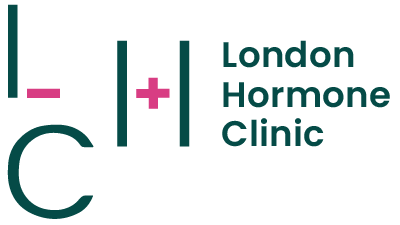We Should All Be Talking About IR.
Insulin resistance is the leading cause of ageing. It’s something people know little about and a condition many doctors fail to diagnose or treat. Which is crazy when you consider that it’s the major driver for many diseases, such as cancer, heart attacks, strokes, infertility, dementia, diabetes… the list goes on. Nine out of ten people who have insulin resistance aren’t diagnosed and don’t even realise they are living with the condition, and yet, it is impacting their lives and their longevity.
So, what is insulin resistance?
Insulin is a hormone made by the pancreas that helps glucose in your blood enter cells in your muscle, fat, and liver, where it’s used for energy. We all need starch and sugar in our diets, but the more we eat, the more insulin is needed to regulate our blood sugar levels.
Over time, cells can become resistant to insulin, meaning more and more insulin is needed to keep blood sugar levels normal until the point that the pancreas can’t keep up. This causes midline weight gain and leads to general inflammation in the body. The long-term effects of this include Alzheimer’s, diabetes, heart disease, and some cancers.
Who is at risk?
The short answer is everybody, although some people are more susceptible than others. If you’re over forty-five, overweight or obese, have a high sugar or high carbohydrate diet, and live a sedentary lifestyle, then you are more likely to develop insulin resistance. A family history of type two diabetes, chronic stress, and certain medications can worsen IR. That said, the condition is becoming more and more common, and is being diagnosed in young people who are slender, eat healthily, and are physically active.
Is diet to blame?
Our Western diet, and the sugar content we consume, certainly plays a key role in this. Here in the UK, the advice is that ‘free’ sugars – that’s those added to food or drinks by manufacturers and those found naturally in honeys, syrups, smoothies, purees and unsweetened fruit and vegetable juices, should not make up more than 5% of the energy we take in from food and drink every day. That’s around 30g for adults and 24g for children aged seven to ten. And yet, we’re consuming far more than that, on average between 9 and 12.5 percent of our calorie intake.
Alongside this, we have an incredibly poor understanding of how our diets may need to change as we age. People with high cholesterol are incorrectly told to eat porridge and cut back on eggs, when it is in fact insulin resistance which causes high cholesterol. The advice should always be to reduce sugars and high carbohydrate foods, things like bananas, sweet potatoes, apples, and brown rice, even if those foods appear to be healthy.
IR and Polycystic Ovarian Syndrome
Now you may be wondering why we’re talking about PCOS – a condition that affects around one in ten women. And how it relates to insulin resistance. The reason is that polycystic ovarian syndrome is exceptionally poorly named. PCOS suggests that ovarian cysts are to blame for the condition, when actually, they are a symptom. The root cause is, in fact, an underlying predisposition to insulin resistance. This issue alone causes all the symptoms of PCOS and is the reason hormonal changes develop. It is also the key to reversing and managing it.
The good news
Insulin resistance can be treated and is completely reversable. First, through lifestyle and nutritional changes, such as increasing levels of daily exertion and switching to a low, not a no-carbohydrate diet. Medication can also be used in some cases. Metformin reduces glucose production in the liver and, in doing so, improves the body’s ability to respond to the hormone insulin. It is used to treat insulin resistance in women with PCOS and should also be used for older patients with IR too. Currently, older patients are only prescribed Metformin once they are diabetic, which is much too late. And there’s Ozempic, an appetite suppressant which has made headlines lately. This aids weight loss when it’s being used, and in doing so, combats insulin resistance. Patients do need nutritional help and support when they stop using it though – something that is often overlooked.
The missing link
It seems straightforward, diagnose insulin resistance, and treat it, but, as with many conditions it’s not that simple. That’s because, despite its prevalence, many doctors don’t know how to diagnose or treat it.
Insulin resistance is easily diagnosed – if someone has visceral midline weight then they have it. Visceral fat isn’t the type you can ‘pinch’ – it’s found deeper in your abdomen where most of your internal organs are. There are sensitivity tests which can be used to confirm this; tests which measure insulin, cholesterol, and SHBG (sex hormone binding globulin) – that’s a protein made in the liver that drops as insulin levels rise. Blood sugar monitoring isn’t an accurate measure of IR as levels only read ‘abnormal’ once diabetes has already developed. That’s why the new wearable glucose monitors which have boomed in popularity recently are often inaccurate and can, and often do, result in people eating too many carbs. There is no need for a non-diabetic to use one.
Most doctors don’t look out for early signs of insulin resistance. At London Hormone Clinic, we do. We actively search for it so that we can treat it, reverse it, prevent long-term chronic disease, and help our patients achieve optimum longevity.

